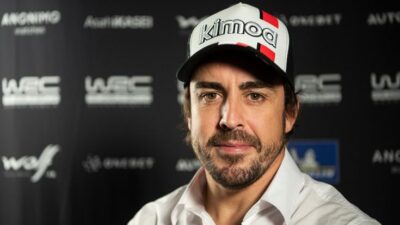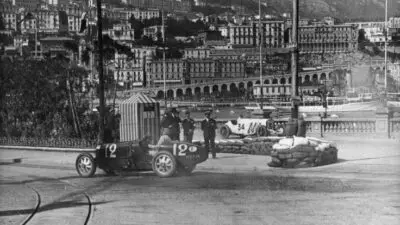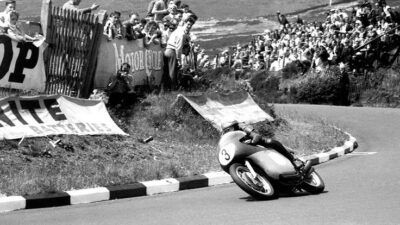Casey Stoner stands as one of the most naturally talented riders in MotoGP history. Born in Queensland, Australia on October 16, 1985, Stoner rose from humble beginnings to become a two-time MotoGP World Champion in 2007 and 2011, claiming titles with both Ducati and Honda factory teams. His extraordinary ability to take motorcycles beyond their limits while maintaining control set him apart from his contemporaries, establishing a legacy that continues to influence the sport years after his retirement.

Despite having a relatively short career, Stoner’s impact on motorcycle racing remains profound. His aggressive riding style and technical mastery made him a formidable competitor on any track. What makes his achievements even more remarkable is his 2007 championship victory, where he won despite riding a bike that was “getting eaten alive” by the competition, demonstrating his exceptional talent to overcome technical disadvantages.
His decision to retire at just 27 years old surprised many fans, but it reflected the integrity and determination that characterized his entire career. Today, more than a decade after his last full-time season, Stoner remains one of the most talked-about and admired figures in motorcycle racing, with his influence continuing to resonate throughout the paddock.
Casey Stoner’s Early Life and Racing Beginnings


Casey Stoner’s journey to becoming a MotoGP legend began in his early childhood in Australia, where his passion for motorcycles was nurtured in a family environment that breathed motorsport.
Childhood in Australia
Casey Joel Stoner was born on October 16, 1985, in Adelaide, South Australia. He grew up in a family deeply involved in motorsport, with his father being an experienced dirt bike racer and motorcycle mechanic. This environment naturally shaped his future career path.
Stoner’s introduction to motorcycles came at the remarkably young age of four, when he first rode minimotos. By age six, he was already competing in races, showing exceptional natural talent that set him apart from other children his age.
The Stoner family made significant sacrifices for Casey’s developing career. They eventually moved to Queensland, where more racing opportunities were available for the young prodigy to hone his skills on various dirt tracks across Australia.
Entry into Junior Racing
By his early teens, Stoner had amassed an impressive collection of achievements in Australian junior competitions. His racing record included:
- Over 70 dirt track titles
- 41 state championships
- Multiple Australian championships
At just 14 years old, Stoner made a life-changing decision with his family to move to Europe to pursue professional motorcycle racing. This bold move demonstrated the family’s commitment to his burgeoning career.
In Europe, Stoner competed in the Spanish and British 125cc championships, quickly establishing himself as a rider with extraordinary potential. His aggressive riding style and natural ability to push motorcycles to their limits caught the attention of team managers in the World Championship paddock.
Transition to the 125cc World Championship
Stoner made his debut in the World Championship at just 15 years old in the 125cc class. His early years in the championship were challenging, as he competed on less competitive machinery compared to factory-backed riders.
In 2003, Stoner secured his first podium finish in the 125cc World Championship. This breakthrough performance confirmed his potential at the international level and marked him as a future star of the sport.
The 2004 season proved to be Stoner’s breakout year in the 125cc class. Riding for the KTM factory team, he secured his first Grand Prix victory and multiple podium finishes. His performances in the lightweight class showcased his exceptional talent for motorcycle control and race craft.
These formative years in the 125cc World Championship laid the foundation for what would become one of the most remarkable careers in MotoGP history.
Ascent to MotoGP Stardom

Casey Stoner’s rise to motorcycle racing prominence showcased his exceptional natural talent and determination. His journey from junior competitions to MotoGP champion revealed his unique ability to master increasingly powerful machines.
Breakthrough in 250cc and Premier Class
By the age of 18, Stoner was already competing in the 125cc World Championship, where he won his first GP races. His first victory came at Valencia in 2003, establishing him as a rising talent in motorsport.
Stoner’s progression through the ranks was remarkably swift. After proving himself in lower categories, he moved to the 250cc class where his aggressive riding style and exceptional bike control set him apart from competitors.
In 2006, Stoner made his MotoGP debut with Honda, showing flashes of the brilliance that would soon define his career. His natural ability to adapt to high-powered motorcycles became immediately apparent to racing observers.
Adaptation to MotoGP Machinery
Stoner’s transition to the premier class revealed his extraordinary talent for mastering difficult motorcycles. His 2007 move to Ducati proved decisive in his career trajectory.
The Australian’s ability to tame the notoriously challenging Ducati Desmosedici was remarkable. While other riders struggled with the bike’s characteristics, Stoner won the championship in his debut season with Ducati.
His riding techniques were innovative and effective. At circuits like Laguna Seca, Stoner demonstrated his unique approach, even mastering difficult corners through methods like PlayStation practice.
The Australian’s ability to extract maximum performance from his machinery made him one of the most formidable competitors in MotoGP history, even when riding motorcycles others found difficult to control.
Triumph with Ducati: A Defining Era

Casey Stoner’s partnership with Ducati transformed both his career and the Italian manufacturer’s presence in MotoGP. His exceptional talent and the raw power of the Ducati created a formidable combination that rewrote racing history.
2007 MotoGP Championship Victory
Casey Stoner joined Ducati in 2007 under unusual circumstances – initially as a temporary replacement rider. Despite being only in his second year in MotoGP, Stoner’s debut season with Ducati proved remarkable.
The Australian rider shocked the racing world by mastering the notoriously difficult Desmosedici when many veterans couldn’t. He secured Ducati’s first-ever MotoGP World Championship at the Japanese Grand Prix.
This victory triggered scenes of unbridled joy at Ducati’s Borgo Panigale factory, where thousands of fans gathered to witness history. The championship was particularly significant as it came against established competitors with more experience.
Stoner’s triumph represented more than personal success – it validated Ducati’s approach to MotoGP and established both rider and manufacturer as elite competitors.
Riding the Ducati Desmosedici
Stoner’s relationship with the Ducati Desmosedici wasn’t love at first sight. After his initial test laps, he reportedly thought, “What have I done? I’ve made a huge mistake”.
However, Stoner quickly adapted to the machine’s challenging characteristics:
- Exceptional throttle control: Mastered the bike’s aggressive power delivery
- Corner entry speed: Developed unique braking techniques
- Fearless riding style: Pushed the Ducati beyond what others thought possible
The Desmosedici had a reputation for being unrideable for most racers, but Stoner’s adaptability transformed this weakness into a strength. His riding style perfectly complemented the raw power of the Italian machine.
Many experts consider the Stoner-Ducati partnership one of the greatest rider-machine combinations in MotoGP history, demonstrating how a talented rider can overcome mechanical challenges.
Technical Innovations and Bike Development
Stoner’s feedback proved invaluable to Ducati’s engineering team as they refined the Desmosedici. His precise technical understanding helped identify crucial areas for improvement.
Key developments during the Stoner era included:
- Engine refinements: Improved power delivery for better acceleration
- Chassis modifications: Enhanced stability while maintaining Ducati’s power advantage
- Electronics package: Sophisticated traction control systems tailored to Stoner’s riding style
The collaboration between Stoner and Ducati engineers created a motorcycle specifically tuned to maximize his unique abilities. This synergy between rider input and technical development established a blueprint for future racing teams.
The innovations from this period continued influencing Ducati’s approach long after Stoner departed. His legacy at Ducati extends beyond race victories, contributing to the manufacturer’s technical philosophy that eventually led to future championships.
Success at Repsol Honda

Casey Stoner’s move to Repsol Honda marked a pivotal chapter in his career, resulting in championship glory and cementing his legacy in MotoGP. His adaptation to Honda’s machinery showcased his exceptional talent and versatility as a rider.
Switching to Repsol Honda
After achieving success with Ducati, Casey Stoner made the significant decision to join the Repsol Honda team for the 2011 season. This career move came after Stoner had already proven himself as a world champion in 2007. The Australian rider was seeking a new challenge and the opportunity to compete with different machinery.
The transition to Honda was announced before the end of his final Ducati season, creating buzz throughout the paddock. Many racing analysts questioned whether Stoner could adapt to Honda’s different riding style and technical approach.
His partnership with Repsol Honda paired him with one of the most prestigious teams in MotoGP history, known for their technical excellence and resources.
2011 MotoGP World Championship
Stoner’s first season with Repsol Honda proved to be a resounding success. He displayed dominant form reminiscent of his 2007 championship campaign, quickly adapting to the RC212V motorcycle. Throughout the season, his exceptional speed and race craft became evident as he accumulated victories.
The championship culminated at Phillip Island, Stoner’s home track in Australia. In a storybook ending, Stoner secured the 2011 MotoGP World Championship on his 26th birthday. He needed to win the race with Jorge Lorenzo finishing fourth or worse, and Stoner delivered a commanding performance.
This achievement made him a two-time world champion and validated his decision to switch teams. It also demonstrated his versatility, becoming one of the few riders to win championships with different manufacturers.
Adapting to Honda’s Racing Philosophy
Stoner’s success with Repsol Honda highlighted his remarkable ability to adapt to different motorcycles. The Honda RC212V required a different riding approach compared to the Ducati he had previously mastered.
He quickly formed a strong working relationship with his Honda crew, including key technical personnel who were instrumental in his success. Stoner’s feedback and development skills helped refine the motorcycle throughout the season.
His riding style meshed perfectly with Honda’s engineering philosophy, resulting in a motorcycle-rider combination that dominated the field. Despite the pressure of representing one of MotoGP’s most prestigious teams, Stoner thrived in the environment.
The partnership showcased both Stoner’s adaptability and Honda’s commitment to providing championship-winning machinery.
Legendary Rivalries and Personal Challenges

Casey Stoner’s MotoGP career featured intense competition and significant obstacles that shaped his legacy. His fierce battles with top competitors and ability to overcome personal challenges demonstrated his exceptional talent and determination.
Battles with Valentino Rossi
The rivalry between Casey Stoner and Valentino Rossi stands as one of MotoGP’s most memorable conflicts. Their most famous confrontation came at Laguna Seca in 2008, where Rossi executed a controversial pass at the corkscrew, pushing both riders off the track. This incident intensified their already competitive relationship.
Their rivalry peaked during the 2007 season when Stoner, seemingly arriving out of nowhere, challenged Rossi’s dominance. The Australian’s raw speed on the Ducati frustrated Rossi, who had previously reigned supreme in the sport.
The tension between them continued through press conferences and on-track battles. Despite their fierce competition, both riders elevated MotoGP with their contrasting styles – Stoner’s quiet precision versus Rossi’s flamboyant showmanship.
Duels with Dani Pedrosa and Other Contenders
Stoner’s battles with Dani Pedrosa created another compelling MotoGP storyline. When both rode for Honda, their competition became particularly intense as they fought for team supremacy with identical machinery.
Jorge Lorenzo also emerged as a significant rival, especially during Stoner’s championship years. Their wheel-to-wheel racing showcased extraordinary skill and bravery, with both riders pushing each other to new performance levels.
Stoner demonstrated remarkable adaptability by mastering difficult tracks. At Laguna Seca, he perfected one of the toughest corners by practicing on PlayStation, showing his innovative approach to competition.
These rivalries helped establish Stoner as a true legend, with his exceptional riding style often forcing competitors to take extraordinary risks to keep pace.
Overcoming Injuries and Setbacks
Stoner faced numerous physical challenges throughout his career. His battle with chronic fatigue syndrome and lactose intolerance severely impacted his performance before proper diagnosis, causing unexplained energy drops during races.
Financial struggles marked Stoner’s early career development. Unlike many competitors, he lacked substantial backing until key sponsors provided critical support enabling his progression through racing’s ranks.
A series of crashes in 2012 led to ankle injuries that compromised his final season. Despite these physical setbacks, Stoner consistently showed remarkable courage by racing through pain.
His premature retirement at just 27 surprised the racing world. Rather than compromise his principles or health, Stoner made the difficult decision to step away while still at his competitive peak, demonstrating the same uncompromising approach that defined his racing style.
Retirement and Enduring Legacy

Casey Stoner’s retirement marked the end of a brilliant racing career, but his influence on MotoGP continues to resonate years after his final race. His technical skills and racing philosophy have left an indelible mark on the sport.
Decision to Retire from MotoGP
Casey Stoner shocked the racing world when he announced his retirement at the Le Mans pre-race press conference in 2012. At just 27 years old and still at the peak of his abilities, Stoner walked away from MotoGP while many believed he had years of competition left. His decision stemmed from several factors, including his desire to prioritize his health and family.
Stoner had been battling chronic fatigue syndrome, which made the demands of the MotoGP calendar increasingly difficult. He was also a new father and wanted to spend more time with his growing family.
“I don’t have the passion for it anymore,” Stoner explained during his retirement announcement. Unlike many athletes who leave their sport due to declining abilities, Stoner departed as a champion still capable of winning races.
Recognition as a MotoGP Legend
Following his retirement, Stoner was quickly inducted into the MotoGP Legends Hall of Fame, cementing his status among the all-time greats. This prestigious honor recognized his extraordinary contributions to motorcycle racing, including his two world championships with different manufacturers – Ducati in 2007 and Honda in 2011.
What makes Stoner’s legacy particularly significant is how his reputation has grown since retirement. Many current MotoGP riders cite him as an inspiration and technical reference. His ability to extract maximum performance from motorcycles remains a benchmark.
The Netflix documentary announced about his life and career demonstrates the ongoing interest in his racing story and technical approach to the sport, introducing his legacy to new generations of racing fans.
Impact on Motorsport and Honors
Stoner’s impact on motorsport extends beyond his championship titles. He remains the only rider to win a MotoGP championship with Ducati, a feat that underscores his exceptional adaptability and riding skill. His aggressive riding style and exceptional cornering abilities revolutionized how riders approach modern MotoGP racing.
In his native Australia, Stoner is celebrated as one of the country’s greatest sporting icons. The “Stoner Corner” at Phillip Island circuit was named in his honor, recognizing his dominance at his home track where he won six consecutive Australian Grands Prix.
Recently, Stoner made headlines for his generous $10 million donation to support cancer patients in Australia, showing his commitment to giving back to his homeland. His enduring legacy continues to grow, with many experts arguing that his brief but brilliant career represents one of MotoGP’s most impressive chapters.



